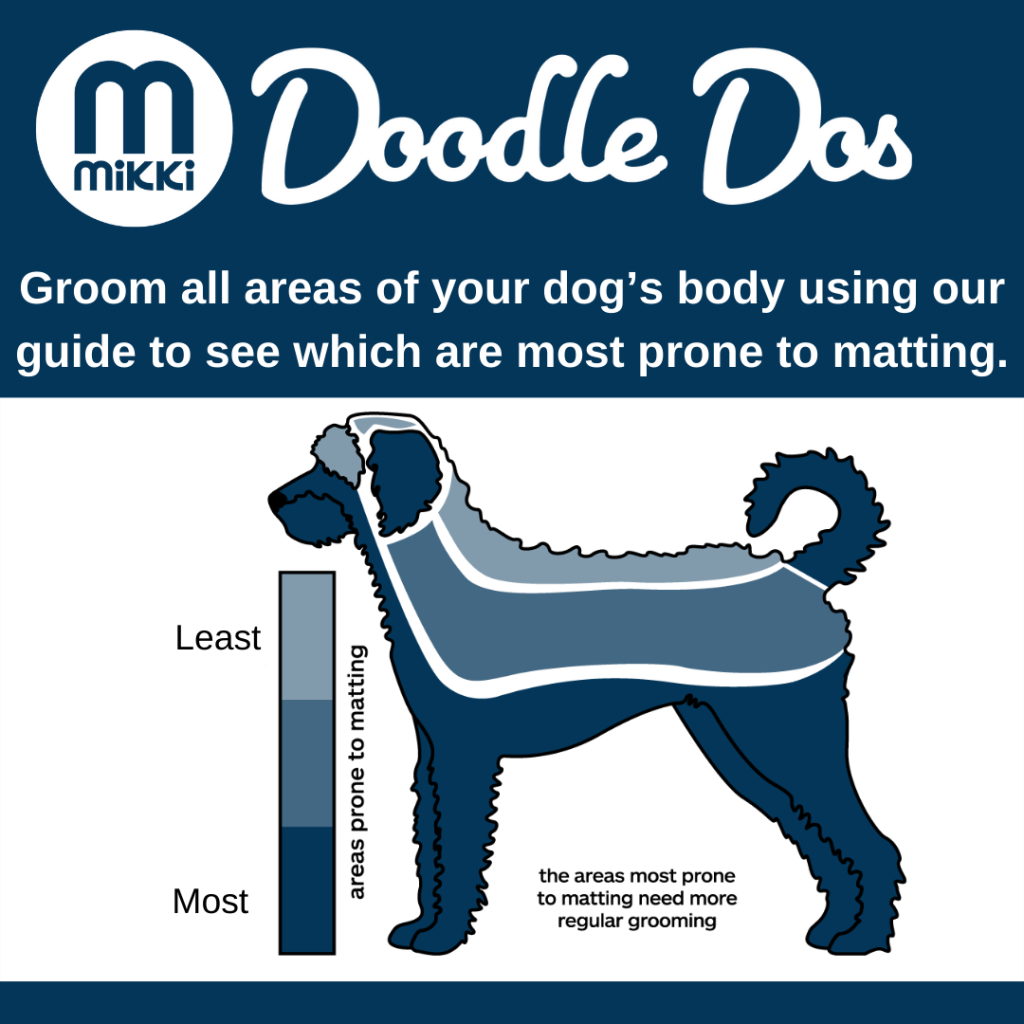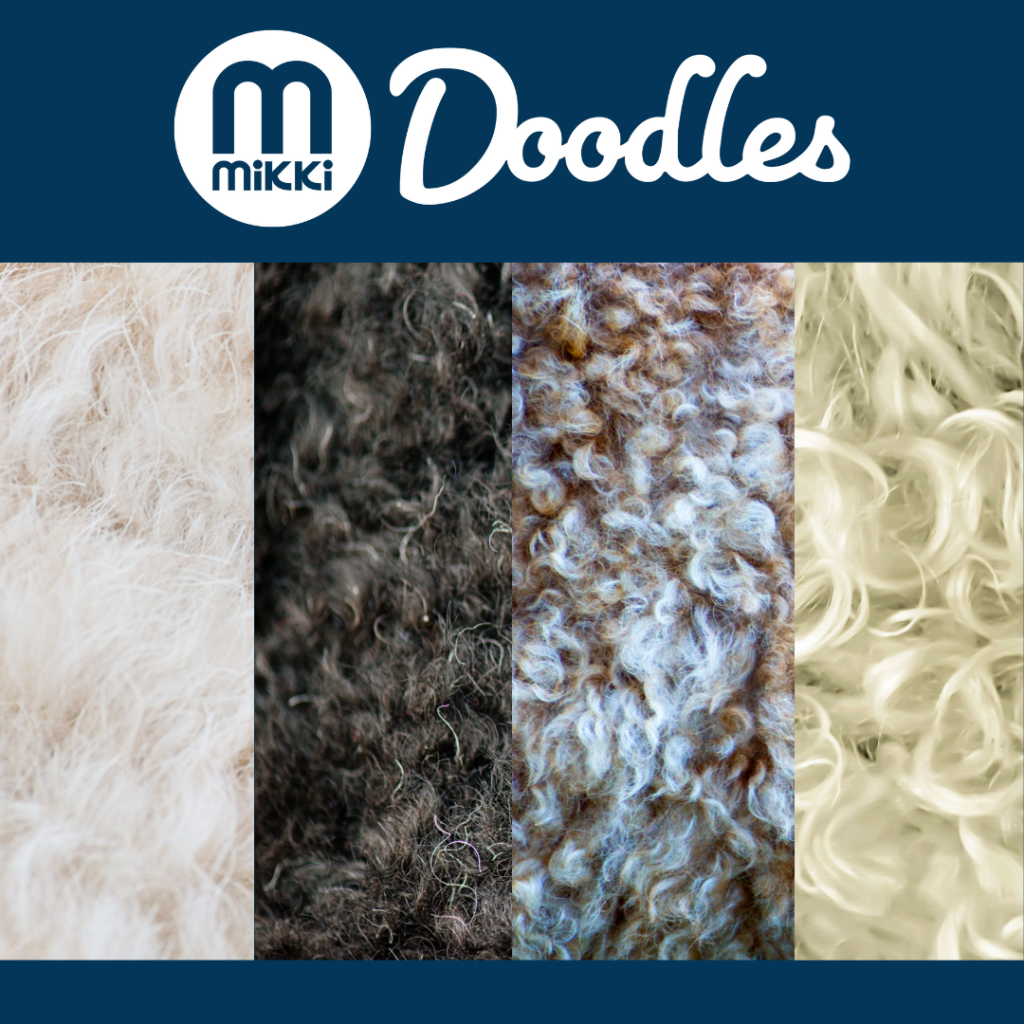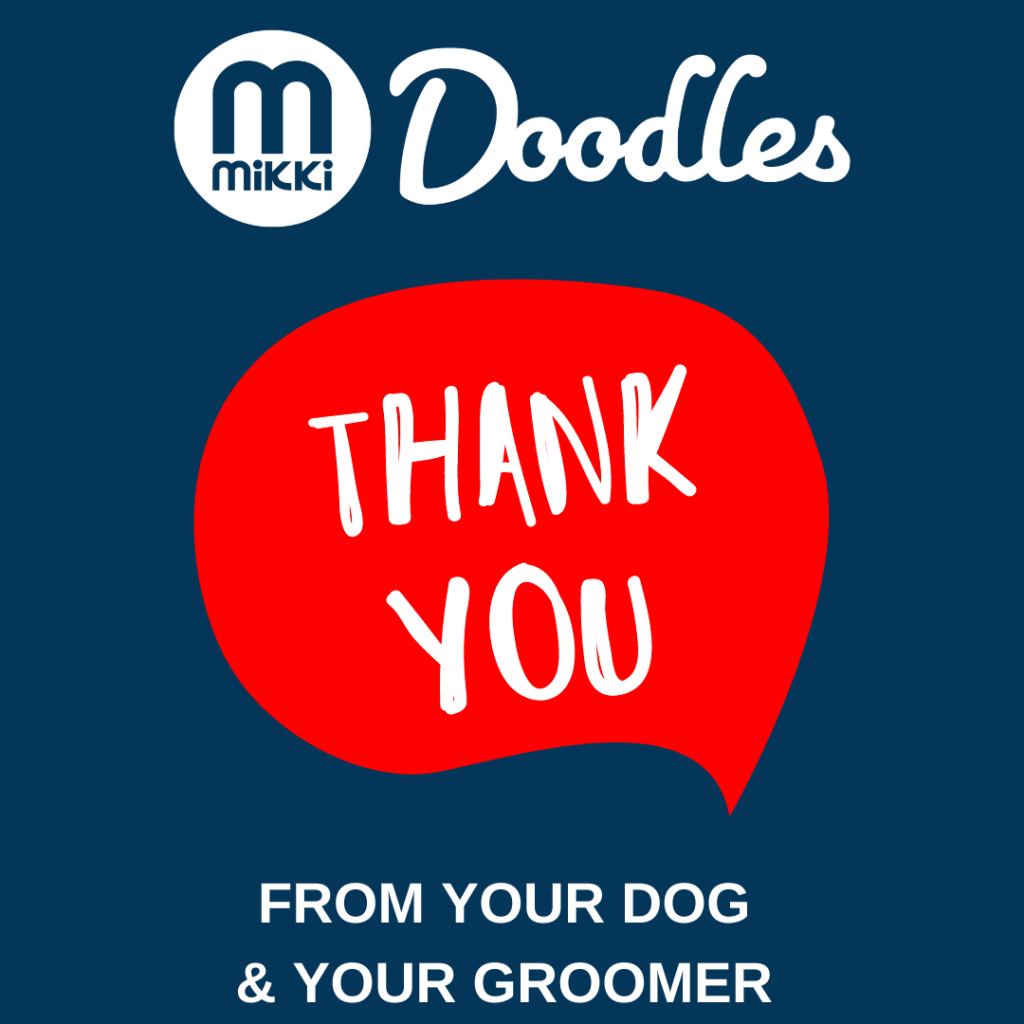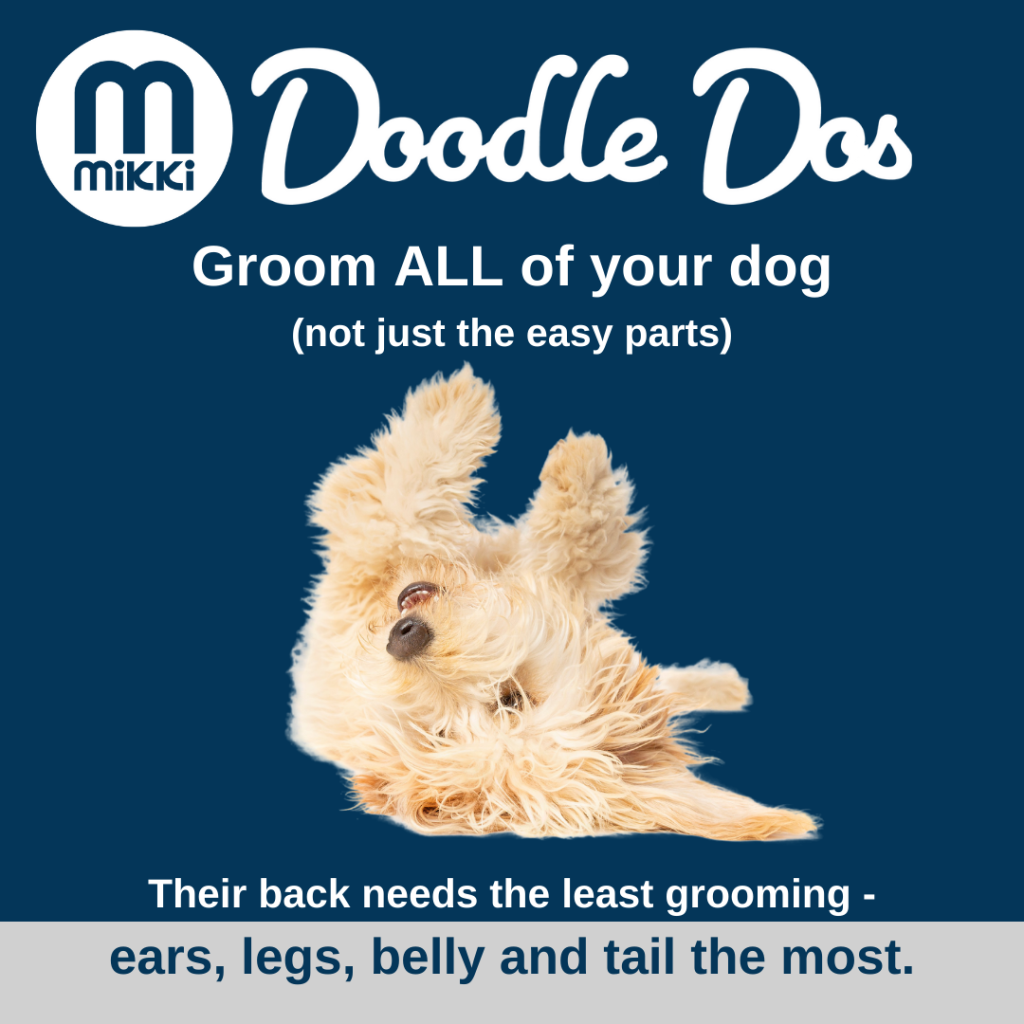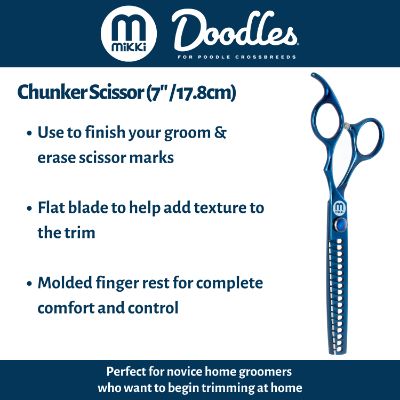






Puppy Kauwspeeltjes
Leer je nieuwe beste vriend vanaf het begin gezonde kauwgewoonten aan! Onze Puppy kauwspeeltjes zijn speciaal ontworpen om te vermaken, tandpijn te verzachten en destructief gedrag te ontmoedigen. Bekijk onze verschillende kauwspeeltjes voor puppy’s.


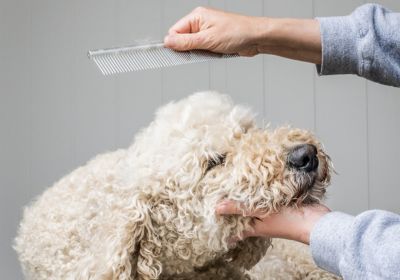
Doodles verzorging
Om te helpen ontklitten

Doodles Jassen
Om te helpen beschermen

Doodles schaar
Om te helpen trimmen en opruimen
VACHTVERZORGING VOOR POEDELKRUISINGEN

DOODLES VERZORGING


4 EENVOUDIGE STAPPEN OM SCRUFFY, FLUFFY TE HOUDEN!



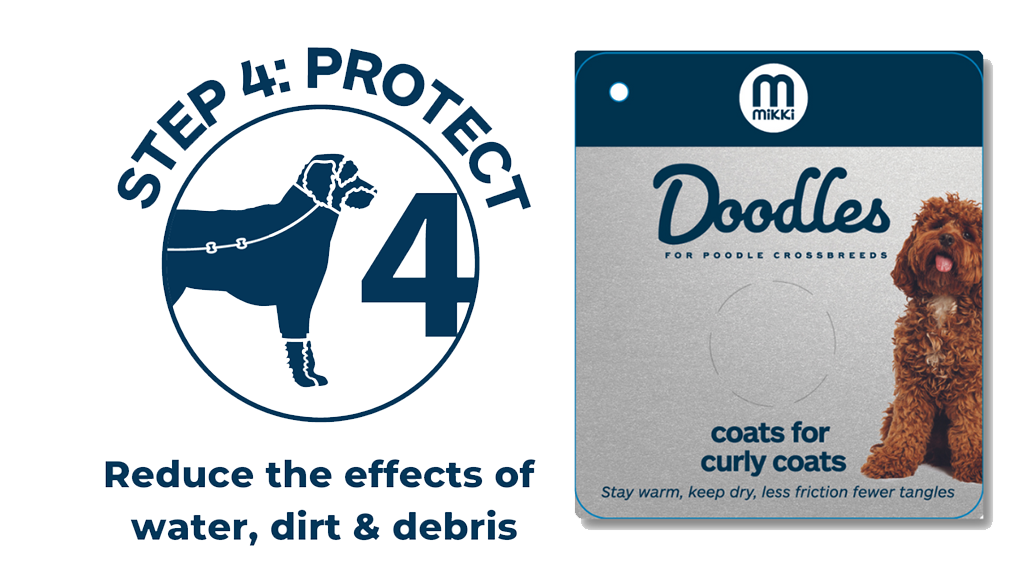

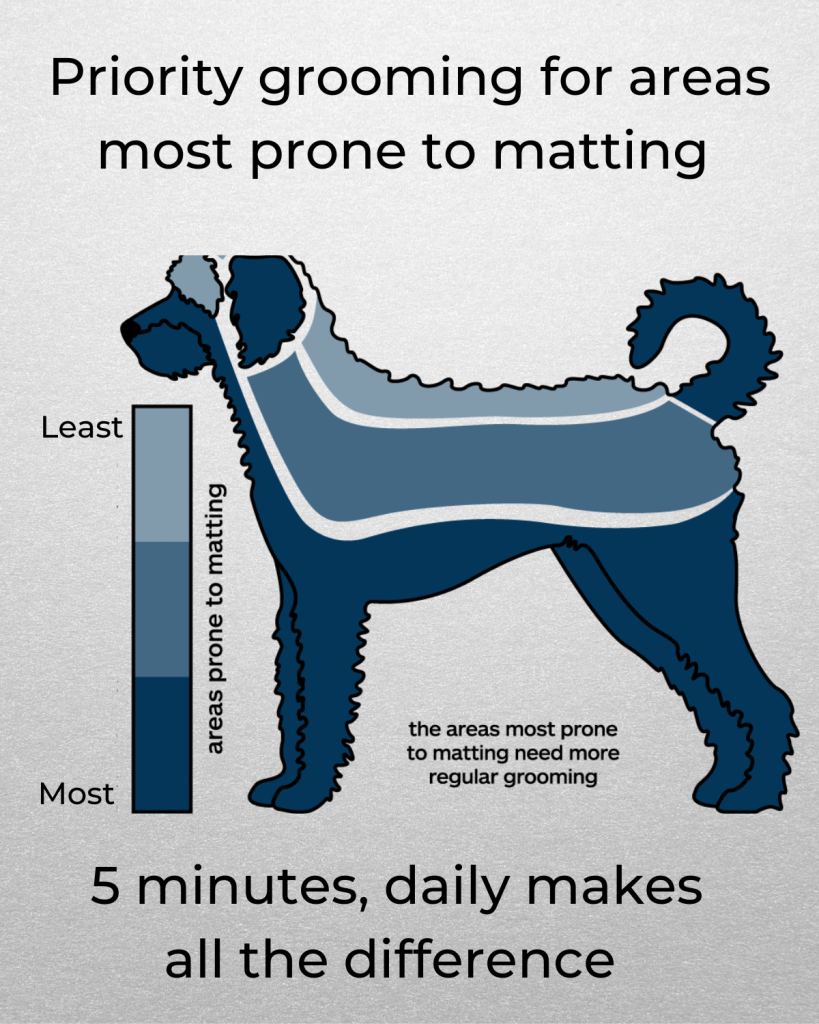
DOODLES JASSEN




Waarheid: Poedelkruisingen verharen over het algemeen minder dan andere rassen, dit komt omdat hun losse haar in de vacht blijft. Als dit haar niet regelmatig wordt verwijderd, kan het knopen en klitten vormen die erg ongemakkelijk worden voor de hond. We raden een korte dagelijkse groom aan (vijf minuten is voldoende) om knopen en klitten op afstand te houden. Daarnaast helpt het om de vacht tijdens het wandelen te beschermen tegen de elementen (regen, wind, sneeuw, vuil, puin, enz.) om deze in goede conditie te houden. Onze Doodle jassen zijn gevoerd met een speciale polyester-zijde die de wrijving tussen de vacht en de vacht van de hond vermindert.
Minimaal elke 6 weken (maar één keer per maand houdt die teddybeerlook op punt!)
Maximaal 8 weken, afhankelijk van het vachttype (hoeveel poedel er in het vachttype zit en welke verzorgingsroutine thuis wordt gevolgd).
Voor vachten die groter zijn dan de grootte van een erwt, raden we je aan contact op te nemen met een professionele trimsalon.
Doodles zijn een steeds populairdere hondenkeuze voor veel eigenaren, soms omdat ze denken dat hun vacht niet verhaart en hypoallergeen is. Dit is soms waar, maar niet altijd – veel Doodles SCHijten wel – maar het dode haar verlaat de vacht niet. Het hoopt zich op aan het huidoppervlak en als het niet wordt uitgeborsteld, klit het met het levende haar en vormt het matten.
Door je puppy op jonge leeftijd kennis te laten maken met het verzorgingsproces, wordt het een deel van het leven en niet iets stressvols of traumatisch:
. Een puppy mini-groombeurt (die bestaat uit wassen, föhnen, nagels knippen en borstelen met een handschaar) vanaf 12 weken of wanneer ze hun laatste inentingen hebben gehad. Dit is een essentiële desensibilisatie op jonge leeftijd die levenslange voordelen heeft voor je hond – het geluid van de drogers, de schaar, het gezoem van de tondeuse en het gewend raken aan het omgaan met en weg zijn van hun baasje geeft ze de levensvaardigheden om goed te doodlen!
Je doodle puppy verliest zijn puppyvacht en krijgt een volwassen vacht ergens tussen de 6-12 maanden oud. Als er tegen die tijd geen regelmatige verzorgingsroutine wordt toegepast, kan deze vachtverandering zeer snel klitten en de ontwikkeling van matten veroorzaken. Helaas is de enige oplossing hiervoor misschien een noodzakelijke scheerbeurt, die niet de makkelijkste inleiding zal zijn tot een levenslange verzorging van je hond.
Ja, de Mikki Doodle jassen kunnen volledig in de wasmachine worden gewassen op een lage temperatuur. Wij raden u aan een niet-biologisch wasmiddel te gebruiken. Vermijd het gebruik van wasverzachter omdat dit de waterdichtheid kan verminderen.
Drogen aan de lucht is het beste. De jassen kunnen chemisch gereinigd worden met elk oplosmiddel behalve trichloorethyleen. Niet in de droger drogen of strijken.
Het is belangrijk om je hond eerst op te meten en dan de maattabel te raadplegen om de juiste maat te vinden. Als hun maten twee maatcategorieën doorkruisen, raden we aan de grootste van de twee te kiezen. De jas kan vervolgens worden aangepast via de riemen, beenriemen en hals voor een comfortabele pasvorm.
Onze Doodle jassen zijn gemaakt met een unieke polyester-zijde voering die de wrijving tegen de vacht van de hond vermindert, waardoor knopen en klitten worden voorkomen.
Doodle Coats zijn waterdicht, wat waterabsorptie voorkomt.
Geen enkele hond is 100% hypoallergeen. Mensen met een wollen vacht, zoals poedels, Bichon Frise en Maltezers om er maar een paar te noemen, veroorzaken vaak minder snel allergische reacties bij hun baasjes. Veel allergieën worden echter veroorzaakt door huidschilfers (dode huidcellen) en de hoeveelheid huidschilfers varieert van hond tot hond, zelfs binnen hetzelfde ras. Wolharige rassen lijken minder huidschilfers te produceren, maar als ze gekruist worden met een ander ras (vooral een ras dat veel verhaart, zoals een Labrador of Golden Retriever) is het waarschijnlijker dat de puppy meer huidschilfers zal produceren dan de wolharige ouder.
Vlekken kunnen overal in de vacht van uw hond ontstaan, maar vooral op plekken waar veel wrijving is – rond de nek waar de halsband zit, achter de oren, onder de kin, de oksels, onder waar het tuigje of de vacht meestal zit, de poten en op de achterkant van de achterpoten. Dit zijn ook de gebieden die over het hoofd worden gezien tijdens het poetsen. Een vervilte vacht is pijnlijk voor uw hond en kan huidirritatie veroorzaken, een goede temperatuurregeling verhinderen en parasieten zoals vlooien en teken verbergen.
Breng je doodle eerst naar een professionele trimsalon. Zij kunnen de vacht van je hond in een conditie en stijl krijgen die jij kunt helpen onderhouden.
Bij thuisverzorging is weinig en vaak het belangrijkste – begin met het regelmatig aanraken van de poten, het lichaam, het hoofd, de oren en de staart van je doodle om hem te laten wennen aan het aanraken. Breng dan langzaam je slicker en kam aan en werk in kleine secties. Vijf minuten per dag is genoeg om de vacht van je doodle in de gaten te houden en te voorkomen dat er matten ontstaan. Besteed vooral aandacht aan plaatsen met veel wrijving waar zich matten vormen – dit zijn vaak de oren, de staart, de oksels, de kraaglijn (waar de halsband zit) en waar een tuigje zit als uw hond er een draagt.
Soms kunnen veranderingen in vachttextuur en -kleur worden toegeschreven aan de vachtverzorging tijdens de puppyperiode. Deze veranderingen ontstaan meestal op natuurlijke wijze doordat de volwassen vacht onder de pluizige, anders gekleurde puppyvacht vandaan komt. Sommige poedellijnen hebben ook genetisch een verblekingsgen, waardoor de natuurlijke vachtkleur na verloop van tijd lichter wordt. Als je doodle dit gen heeft geërfd, zal zijn vacht lichter worden, ongeacht hoe hij wordt verzorgd.
Doodles worden vaak gekocht vanwege hun niet verharende, hypoallergene vacht, die gemakkelijk en onderhoudsarm te houden lijkt. Helaas is dit gewoon niet waar. Doodles hebben een van de meest arbeidsintensieve vachten om te verzorgen. De wol/haar vachtmix is moeilijk te onderhouden (zelfs nog meer op langere lengtes) en kan gemakkelijk mat worden, wat in de meeste gevallen pijnlijk is om uit te borstelen, dus een regelmatige verzorgingsroutine is essentieel.
Doodles moeten thuis dagelijks geknipt en gekamd worden. Gebruik onze verzorgingsgids om te zien welke plekken het meest gevoelig zijn voor vervilting en dus het meest verzorgd moeten worden.
s Avonds is vaak een goed moment om je doodle te laten wennen aan verzorging, omdat ze dan meestal liever ontspannen en verwend worden.
Weinig en vaak is de sleutel tot het behoud van die teddybeerlook!




